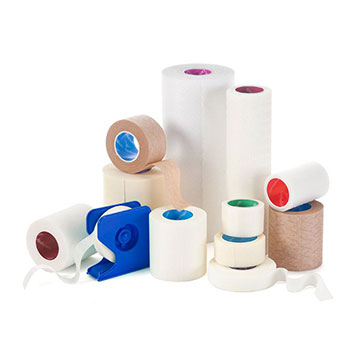In the field of medicine, wound care plays a crucial role in the healing process. Medical tape and medical dressings are essential tools used by healthcare professionals to secure and protect wounds. Whether it’s a small cut or a surgical incision, selecting the appropriate tape and dressing is vital for optimal wound healing. In this blog, we will explore the different types of medical tape and dressings available, their uses, and how to choose the right ones for specific wound care needs.
- Understanding Medical Tape: This tape is a versatile adhesive product that is used to secure dressings, tubes, and medical devices to the skin. It serves as a barrier against external contaminants, prevents wound disruption, and promotes healing. Let’s delve into the various types of tape commonly used in healthcare settings:
- Cloth Tape: Cloth tape, made from woven fabric, is durable, flexible, and allows for easy tearing. It is ideal for securing bulky dressings, as it provides excellent adhesion and can be easily removed without causing discomfort to the patient.
- Paper Tape: Paper tape is hypoallergenic and gentle on the skin, making it suitable for individuals with sensitive skin or allergies. It is commonly used for securing lightweight dressings, such as those used on facial wounds or pediatric patients.
- Waterproof Tape: Waterproof tape, as the name suggests, is resistant to moisture, making it an excellent choice for wounds in areas prone to water exposure, such as the hands or feet. It provides a secure seal and protects the wound from bacteria and other contaminants.
- Exploring Medical Dressings: Medical dressings are materials applied directly to wounds to promote healing, provide a protective barrier, and control moisture levels. They come in various forms and are chosen based on the type and severity of the wound. Let’s explore some commonly used medical dressings:
- Adhesive Bandages: Adhesive bandages, commonly known as “band-aids,” are small, sterile dressings with an adhesive backing. They are designed for minor cuts, abrasions, and blisters. Adhesive bandages are available in various sizes and shapes to fit different wound sites.
- Gauze Dressings: Gauze dressings are versatile and highly absorbent. They are often used for moderate to heavily exuding wounds. Gauze can be applied directly to the wound or combined with other dressings, such as ointments or antimicrobial agents, to enhance healing.
- Hydrocolloid Dressings: Hydrocolloid dressings create a moist environment that promotes wound healing. They are particularly useful for shallow or chronic wounds, as they help debride necrotic tissue and facilitate granulation.
- Choosing the Right Medical Tape and Dressings: Selecting the appropriate medical tape and dressings depends on several factors, including the type of wound, wound exudate, patient’s skin condition, and healthcare provider’s preference. Consider the following when choosing:
- Wound Type: Different wounds require specific types of dressings. For example, a superficial wound may only require a simple adhesive bandage, while a deep surgical incision may require a combination of gauze dressings and tapes.
- Exudate Management: The amount and consistency of wound exudate (fluid) will determine the type of dressing needed. Highly exuding wounds may require absorptive dressings, while minimally exuding wounds may benefit from occlusive dressings to maintain a moist environment.
- Skin Sensitivity: Consider the patient’s skin sensitivity and any known allergies to adhesive materials. Opt for hypoallergenic options when dealing with sensitive skin to prevent potential irritation or complications.
Medical tape and medical dressings are essential tools in wound care, providing secure and protective coverings for various types of wounds. By understanding the different types of tape and dressings available, their uses, and how to choose the right ones, healthcare professionals can ensure optimal wound healing and patient comfort. Proper selection and application of these tools contribute significantly to the overall success of wound care management. Always consult a healthcare professional for personalized advice and guidance when dealing with specific wounds.


